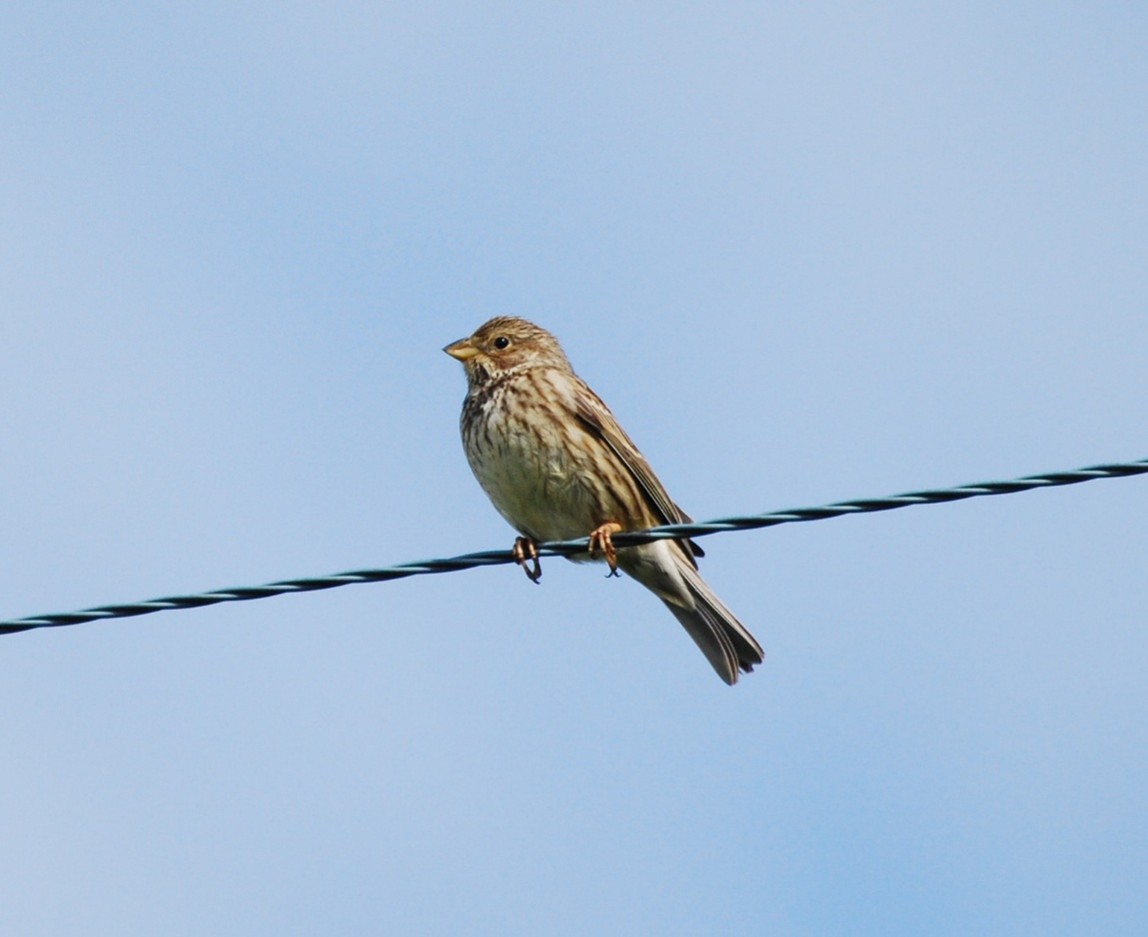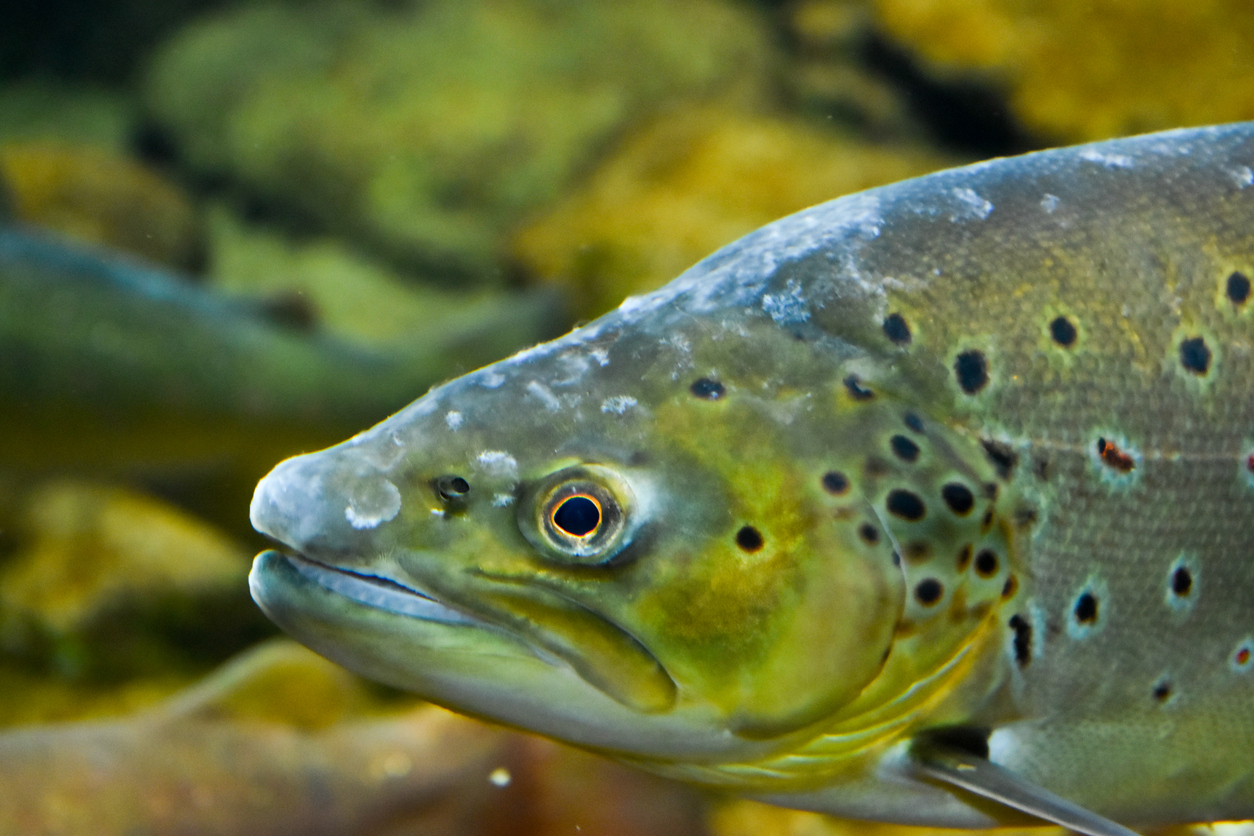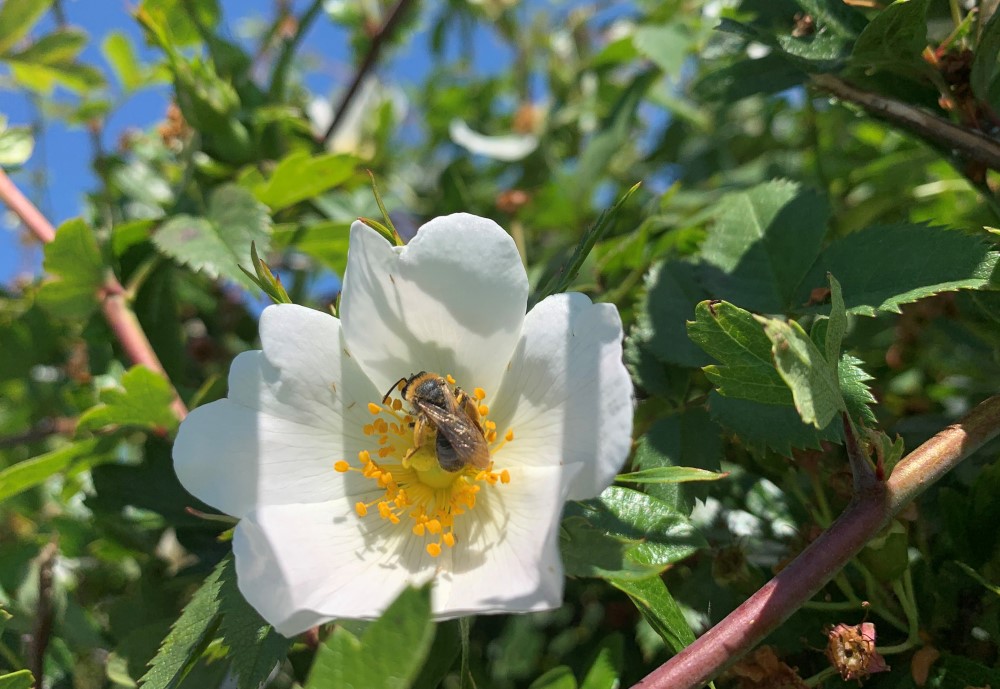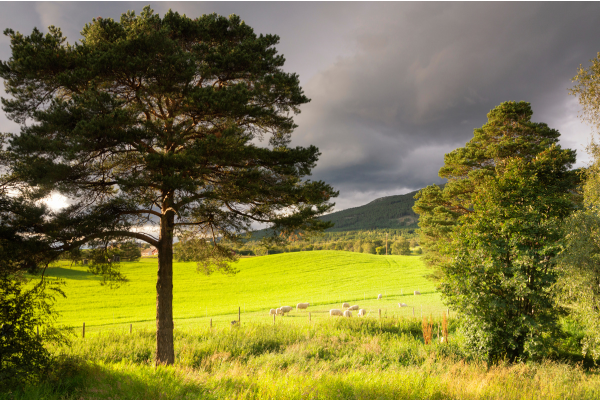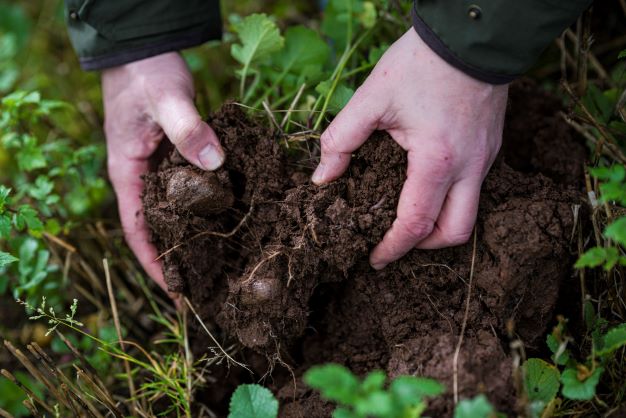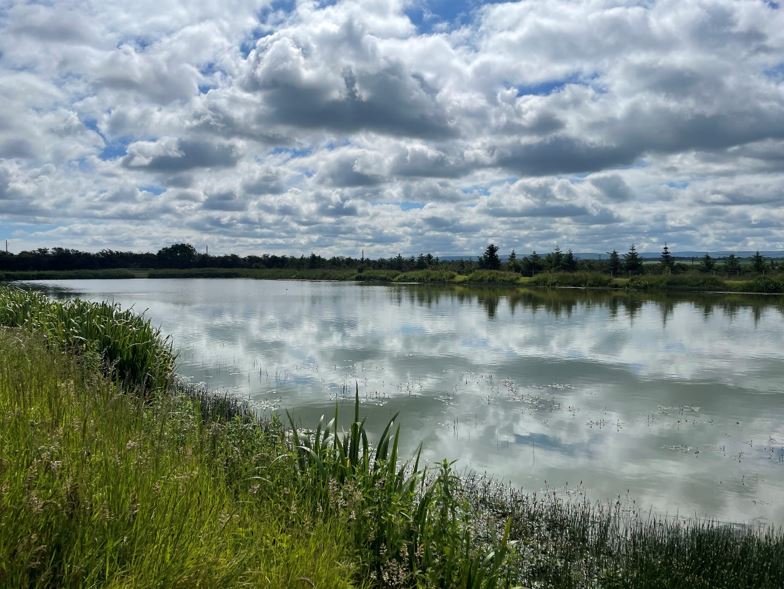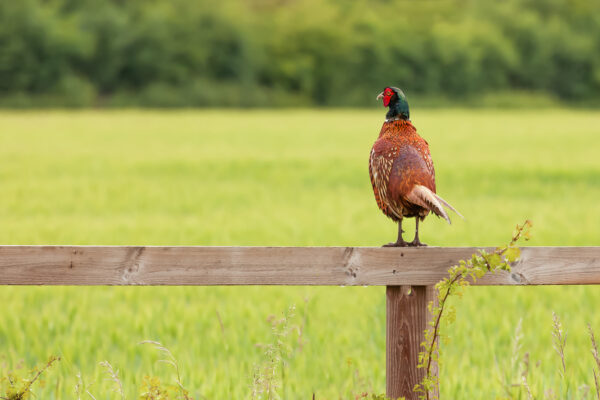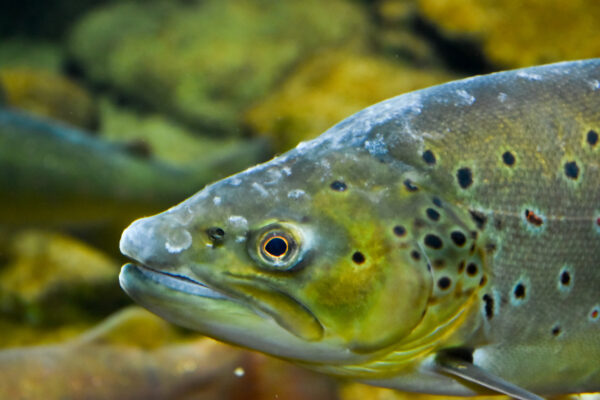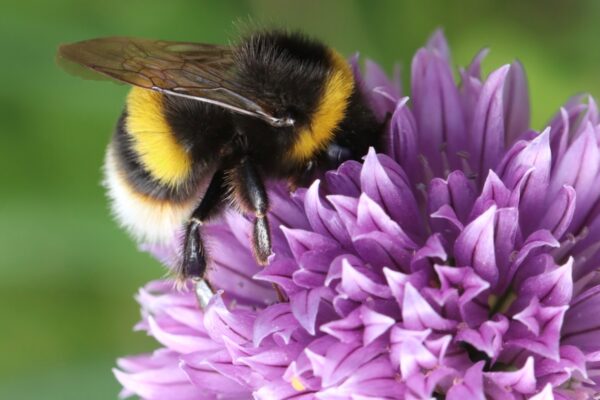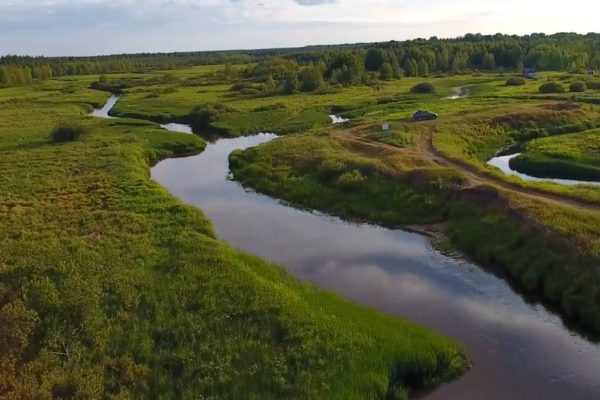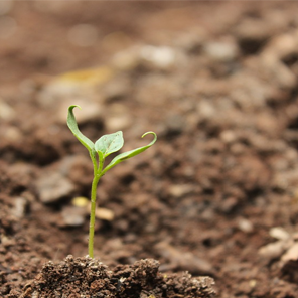River Catchment Management at Landscape-Scale
5 November 2025Biodiversity conservation is often more effective when implemented across larger areas than a single farm. Collaboration within farmer clusters and with other stakeholders enables farmers to implement measures to enhance biodiversity at a landscape-scale. It can also help foster a sense of community and shared responsibility for the environment. This is particularly the case within river catchments where watercourses cross farm boundaries and create linkages across the landscape. Collaborative management across catchments therefore makes sense when tackling issues such as diffuse pollution, flood management and invasive non-native species. There are growing numbers of catchment-based projects throughout Scotland and farmers have a vital role to play in their success.

What are the issues?
The main issues that can be addressed through a catchment management approach are:
Diffuse pollution
This is the release of pollutants across a wide area rather than a single specific point. Examples include pesticide run-off, which can directly harm aquatic life through toxicity, as well as fertiliser run-off which can lead to excessive weed and algal growth (eutrophication). Soil run-off from land that has been cultivated or eroded by livestock is another diffuse pollutant, which can smother aquatic habitats such as gravel beds used for fish spawning but can also carry excess nutrients and pesticides bound to the soil. Of course, it is not just agriculture that can cause diffuse pollution, with forestry, urban areas and roads also contributing to the problem. However, agriculture is the main land use in many catchments, so it is also one of the most important industries that can provide solutions.

Flood management
This is a major concern throughout most of Scotland due to the increasing frequency of damaging storms and high rainfall events. While it is not possible to prevent high rainfall events from causing flooding, it is possible to reduce the risk and extent of damage to property by slowing the flow of water through the catchment. By extending the length of time that it takes the water to move downstream, peak flood levels are reduced, and the energy of the moving water is less concentrated, resulting in a lower risk of defences being overtopped and of damage to property.
Habitat networks
Because watercourses form natural wildlife and habitat corridors through the landscape, and they can be enhanced to link together other areas of natural habitat in the landscape through riparian woodlands or semi-natural grassland and wetlands. This makes populations of many species more resilient, particularly those that are not very mobile and able to cross large gaps between suitable habitats.
Invasive non-native species
These are plants and animals that have been introduced to our environment from other parts of the world, and which, in the absence of the natural checks and balances that control their numbers in their natural range, such as diseases, parasites and competitors, can spread vigorously through the landscape, often replacing native species and reducing biodiversity. Many examples of invasive non-native species in Scotland are particularly associated with watercourse and their banks, including animals such as American Mink and Signal Crayfish and plants such as Himalayan Balsam, Giant Hogweed and Japanese Knotweed.

Himalayan Balsam
Why collaboration makes sense
Individual landholdings typically make up a very small part of a river catchment so efforts to reduce diffuse pollution at a farm scale, while important, will not typically make a big difference to water quality beyond a short distance downstream. However, reducing diffuse pollution at many farms across the catchment will have a large cumulative impact.
The same is true of flood management, where slowing the flow on one landholding will not make a significant impact but a larger cumulative effect is possible across the catchment. In addition, slowing the flow of flood waters on one landholding could have impacts on other landholdings upstream or downstream and for this reason a co-ordinated, collaborative approach is preferable.
Invasive species do not generally confine themselves to one landholding. Animals such as American Mink and Signal Crayfish can move through the catchment, while the seeds of plants such as Giant Hogweed and Himalayan Balsam spread by air and water. Controlling these species is costly and time consuming but will be ineffective if they can easily spread back onto a landholding from neighbouring areas. Co-ordinated catchment scale control is therefore the only sensible approach for effective management of these invasive species.
What needs to happen
Co-ordinating collaborative management efforts across a river catchment is no easy task and farmers and other land managers are busy with day-to-day work. Consequently, in practice catchment management usually requires a third party to engage with land managers and co-ordinate activities. In many parts of Scotland, catchment partnerships have been established to help deliver this role. Examples include:
Catchment partnerships bring together a range of public and private stakeholders such as local authorities, community groups, land managers, SEPA, Scottish Water, conservation bodies, distillers and research institutes to provide an overarching vision for the catchment and to develop and deliver projects. The statutory District Salmon Fishery Boards and their associated Rivers Trusts and Foundations are often closely involved with the work of catchment partnerships and in many areas also deliver their own projects. Some of these, such as the Forth Rivers Trust are active across several adjoining catchments.
It is fair to say that some farmers and other land managers may have reservations about the role of catchment partnerships, with concerns about potential impacts on productivity and uncertainty of the benefits to individual businesses. Engaging farmers and farmers’ organisations within catchment partnerships is therefore essential to build trust and to establish a two-way dialogue that considers farmers’ concerns and local knowledge when developing projects. Ultimately many of the collaborative objectives of catchment management can’t be achieved without the support of farmers and other land managers.
Funding is another critical element of catchment management due to the cost of undertaking work across large areas and the costs to individual landholdings associated with changing their land management. This is particularly important in the case of more ambitious interventions, such as re-meandering of watercourses and reconnecting rivers with their floodplains, because the benefits to the wider catchment often come at a significant cost to individual landholdings. Traditionally, much of the financial support has come from public funds such as the Forestry Grant Scheme, Agri-Environment Climate Scheme, Nature Restoration Fund and formerly from the EU’s LIFE programme.
Increasingly, there is interest in attracting private investment into nature conservation and catchment management is no exception. Companies with a direct business interest in water quality, such as the distillers Diageo and Chivas Brothers, already fund some river restoration projects, particularly in the Spey catchment. The Forth Rivers Trust is pioneering a new funding model known as Landscape Enterprise Networks (LENs) in the Loch Leven catchment. The Leven LENs project works by connecting investors with farmers and land managers to implement nature-based solutions that benefit both the environment and the local economy. In 2026, the Scottish Rivers Fund will be launched. Developed by Fisheries Management Scotland in collaboration with partners, this will mobilise private capital through voluntary contributions to support projects across Scotland.
What is the desired outcome?
To reduce diffuse pollution, a suite of measures can be used across a catchment:
- Fencing livestock out of watercourse banks to reduce erosion
- Replacing in-stream waterings with troughs located away from the watercourse
- Create wide buffer strips and wetlands to intercept run-off from agricultural land
- Avoid cultivation on steep slopes and use cover crops to protect soil from erosion
- Use integrated crop management and nutrient management to minimise excessive pesticide and fertiliser applications

Buffer Strip
For natural flood management, slowing the flow of water through the catchment can involve:
- Peatland restoration on the higher ground including ditch blocking and erosion repair
- Riparian tree and shrub planting
- Hedgerow planting across slopes
- Floodplain restoration by lowering or removing embankments
- Wetland creation
- Re-meandering straightened or canalised rivers

Peatland restoration
Creating habitat networks within a river catchment can involve:
- Enhancing riparian buffer strips by planting native woodland or wildflowers
- Planting and restoring hedgerows to link woodland areas
- Creating stepping stones of habitat to bridge gaps for more mobile species

Native scrub alongside a watercourse
Controlling invasive non-native species requires a co-ordinated effort, firstly mapping the distribution of the species and then taking a systematic approach to eradication. In the case of plants, whose seeds disperse downstream, this often involves starting in the headwaters and working downstream to reduce the risk of recolonisation. For mobile animals such as American Mink, a network of monitoring stations such as mink rafts or trail cameras are required across the catchment in order to know where to target trapping efforts.
Key Messages
- Managing diffuse pollution, flooding, habitat networks and invasive species is more effective when farmers and other stakeholders work together across entire catchments.
- The cumulative effect of actions on many individual farms has a greater impact than isolated efforts and helps avoid conflicts.
- Catchment partnerships are necessary to coordinate efforts, build trust with farmers, and connect public and private stakeholders.
- Public funding has been the main source of support in the past, but there is growing private investment in landscape-scale environmental work.
- By working together, farmers have a key role to play in delivering improved water quality, reduced flood risk, improved biodiversity and effective invasive species control.
Paul Chapman, SAC Consulting
All images by Paul Chapman
Related Resources
Sign up to the FAS newsletter
Receive updates on news, events and publications from Scotland’s Farm Advisory Service


